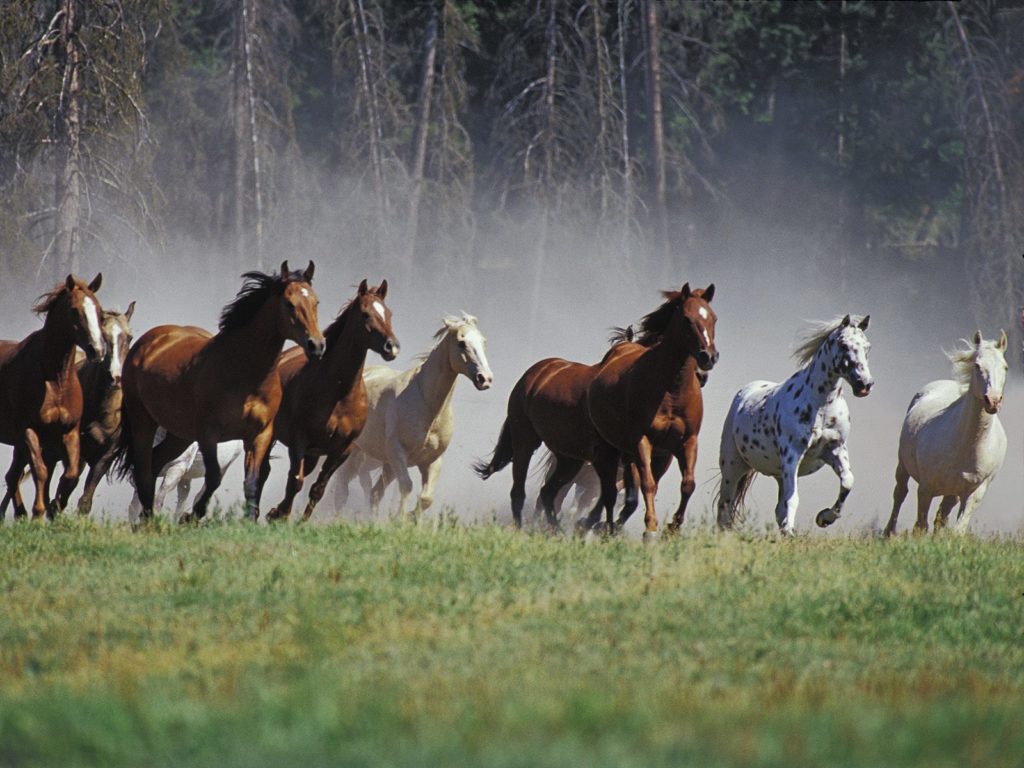Spooking When Outside of the Ring
I ride a horse at a stable not to far away. Some other girls and I go trail riding alot but it doesn’t always work out to well. The main reason is that the horse I ride is often skittish and doesn’t like to do the things I ask of her. In an arena she […]
Am I Overmounted?
Please help!? I’ve read many of your articles and could really use some feedback from someone experienced in teaching new and/ or intermediate riders. ME: – exchanging barn work for riding time @ stable where sales, not lessons, are the focus – am on my own (but not riding alone) where riding practice/ development are […]
My Horse Adds Strides to Jumps
My horse keeps adding strides when he jumps. When I try pushing him, he only goes faster and rushes the jumps. What can I do to get the right strides? Two things will cause a horse to rush with short quick strides on approaching a jump. He has lost his balance and is scrambling to […]
Age Limit for Longeing a Horse
Ask The Trainer At what age should age should you start teaching a horse to longe? I don’t think there is any hard and fast rule as to a specific age, but there are some concerns when longeing a young horse with immature bones and joints. Working a horse in a circular pattern such as […]
Attaining a Deeper and More Balanced Seat
I feel like I need a deeper, more balanced, and relaxed seat. Are there any exercises I can do to help me attain this? Answer: A balanced, relaxed, deep seat is dependent upon the spine being very supple and relaxed, and totally under control. There are many exercises one can do to help supple the […]
What is the difference between a “head set” and a “frame?”
Ask The Trainer What is the difference between headset and frame? Answer: There seems to be some confusion surrounding the terms, “head-set,” and “frame.” While these two terms are often used interchangeably, with many people thinking they mean the same thing, they are actually referring to two very different concepts. The term “head-set” is heard […]
Help with de-worming
Ask The Trainer I’ve always had trouble de-worming my horse. He is a picky eater, and sometimes doesn’t finish his feed, so I really don’t want to use a daily feed-through de-wormer. I’m certain it’ll be wasted at times. I’ve been trying to use a paste de-wormer, but he fights me so badly. It takes […]
Why does my horse cut off corners in the ring?
Ask The Trainer I’m having a difficult time getting around a jump course. My horse always tries to cut corners, I’m always having to pull him out to the rail, and a lot of the time, he misses the jumps across the diagonal. Also, he will often wobble in between two jumps that are in […]
Lengthening a Trot Stride
Ask The Trainer How can I help my 5 year old mare to lengthen her stride at the trot? (She naturally moves ‘flat kneed’) Her canter is beautiful. I ride with minimal rein contact if any but she tends to tuck her chin a little too much. I use my seat and legs to drive […]
Riding the Problem Rental Horse
Question: Most of my time in the saddle is on long distance rides in various parts of Canada, US and Europe using rental horses. These rides are always on different horses. These rides usually cover 25 miles a day for 5 to 8 days at at time. My question deals with how to handle problems […]
